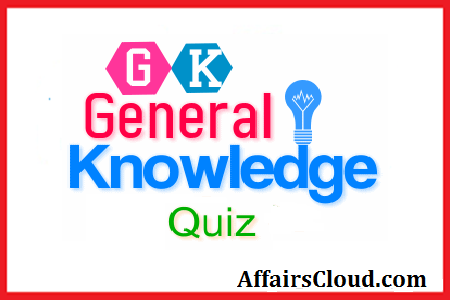Hello Aspirants. Welcome to Online General Knowledge section in Affairs cloud, which is important for all the competitive exams. We have created Some questions related to Indian GK(Indian Polity) !!!
- The 31st Amendment 1973 increased elective strength of Lok Sabha from ……….. to 545
1.525
2.500
3.450
4.475
5.None of theseAnswer – 1.525
Explanation :
The Constitution (31st Amendment) Act, 1973 increased the elective strength of theLok Sabha from 525 to 545 - Which amendment made Sikkim as a state of the Indian Union ?
1.18th Amendment
2.36th Amendment
3.23rd Amendment
4.42nd Amendment
5.None of theseAnswer – 2.36th Amendment
Explanation :
36th Amendment amendment made Sikkim as a state of the Indian Union. Since 10th Schedule was omitted in 36th amendment, it was later reinserted by 52nd Amendment Bill, 1985 as Anti Defection Law. - The 98 Amendment Act 2012 provided a special provisions for the state of ……………….
1.Madhya Pardesh
2.Andhra Pradesh
3.Karnataka
4.Gujarat
5.None of theseAnswer – 3.Karnataka
Explanation :
The 98 Amendment Act 2012 provided a special provisions for the state of Karnataka - The Symbol of Bhartiya Janata Party(BJP) is ………………………
1.Hand
2.Clock
3.Elephant
4.Lotus
5.None of theseAnswer – 4.Lotus
Explanation :
The Bharatiya Janata Party is one of the two major political parties in India.
President: Amit Shah and Symbol: Lotus - The NOTA option was first used in the assembly election of five states in ………………
1.2014
2.2013
3.2012
4.2010
5.None of theseAnswer – 2.2013
Explanation :
The NOTA(None Of The Above) option was first used in the assembly elections held in five states in 2013.More than 15 lakh people exercised the option in the states polls - The Chairman and other member of UPSC are appointed by ………………..
1.President
2.Vice President
3.Prime Minister
4.Finance Minister
5.None of theseAnswer – 1.President
Explanation :
The Chairman and other members of the UPSC (Union Public Service Commission) are appointed by the President of India. - Zonal Councils are associated with which article ?
1.Article 173
2.Article 226
3.Article 263
4.Article 217
5.None of theseAnswer – 3.Article 263
Explanation :
Article 263 of the Constitution of India provides for the establishment of an Inter-State Council. This is the only article of the sub-chapter ‘Co-ordination between States’ of Chapter II -Administrative Relations of Part XI of the Constitution – Relations between the Union and the States. - Which amendment amended the anti-defection laws and provided for Amendment of Article 75 ?
1.93rd Amendment Act 2005
2.89th Amendment 2003
3.88th Amendment 2003
4.91st Amendment Act 2003
5.None of theseAnswer – 4.91st Amendment Act 2003
Explanation :
The Constitution (91st Amendment) Act, 2003, which limits the size of all ministries in India, comes into force on July 7.Which amended the anti-defection laws and provided for Amendment of Article 75 - ………………… of the Indian Constitution directs the State Governments to organize Village Panchayats
1.Article 36
2.Artcle 48
3.Article 40
4.Article 45
5.None of theseAnswer – 3.Article 40Explanation :
Article 40 of the Constitution which enshrines one of the Directive Principles of State Policy lays down that the State shall take steps to organise village panchayats and endow them with such powers and authority as may be necessary to enable them to function as units of self-government. - The Subject Planning figure belongs to which list ?
1.Union list
2.Concurrent list
3.State list
4.All of these
5.None of theseAnswer – 2.Concurrent list
Explanation :
The Concurrent List or List-III (Seventh Schedule) is a list of 52 items (though the last item is numbered 47) given in the Seventh Schedule to the Constitution of India. The legislative section is divided into three lists: Union List, State List and Concurrent List.
The Subject Planning figure belongs to Concurrent list
AffairsCloud Recommends Oliveboard Mock Test
AffairsCloud Ebook - Support Us to Grow
Govt Jobs by Category
Bank Jobs Notification



